Content
The Asian Square Dance – Part 3
The Future Now Show
February Event: the future of Collective Intelligence
Mr. and Mrs. Fleming, Step Forward to Make This Energy Transition Real!
Club of Amsterdam blog
News about the Future
Recommended Book: Superintelligence: Paths, Dangers, Strategies
Syntact – touch the sound
Developing the capacity to “See More” is the great adventure of our time
Futurist Portrait: Ramez Naam
Welcome to the Club of Amsterdam Journal.
In this show we are talking about Governance for All / Philosophy unbound / Robotics and A.I. and … featuring Karin Jironet, Markus Petz, Katie Aquino, aka “Miss Metaverse”, Annegien Blokpoel and Paul Holister The Future Now Show
…. and join our event in London about the future of Collective Intelligence, Wednesday, February 11, 7-9pm.
With Hardy Schloer about:
How will humanity manage the transition from a human based intelligence to a superior machine intelligence in a constructive, peaceful and practical way?
Felix F Bopp, Founder & Chairman
The Asian Square Dance – Part 3
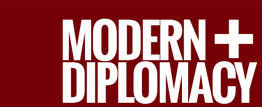

By Michael Akerib, Vice-Rector SWISS UMEF UNIVERSITY
India
India is the world’s largest democracy, and one of the few legitimate democracies in Asia showing that, contrary to statements of certain pundits, that democratic concepts can be successfully applied outside the West.
Contrary to what is happening in China, its population of 1.2 billion, according to the latest census, continues to grow in spite of the fact that it has the world’s highest infant mortality rates. Its working age population is expected to add another 125 million in the next 10 years. This translates in large capital needs for additional infrastructure, making it dependent on foreign investments to a much larger extent than China. Unless it invests massively in infrastructure, its development will be very much hindered.
There is a large imbalance between the genders with a ratio at birth of 914 girls for 100 boys. Life expectancy at birth is of 65 years. Half the population is younger than 18, a quarter is rural and a third lives in extreme poverty.
A large proportion of the population is poor, with 50% having no access to electricity. Poverty is not evenly distriuted geographically, with some states considerably poorer than others – a gap widening ever more thus creating the threat of social movements. A Maoist insurgency has already taken hold.
Nevertheless, the middle and upper class is forecast to grow from its present figure of 200 million to 1 billion by 2050.
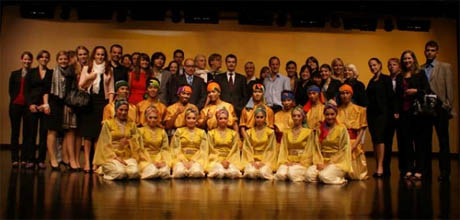
Credits: BFA 2010 (ab.eu)
Its economy, the world’s third largest and second-fastest growing, should reach USD 25 to 30 trillion by 2050 and could be the world’s third largest after that of the US and China. Some analysts even believe it will be the world’s largest on a PPP basis, reaching USD 86 trillion, in that time horizon.
In as much as, contrary to China, its economy is not geared to exports, it is less sensitive to global economic crises. However, it does rely on foreign direct investments to fund its large trade deficit.
India’s development hinges on its ability to carry out a number of reforms, and in particular improve its infrastructure and the educational level of its citizens with a concomitant evolution of the population’s mentality away from a mindset embedded in traditions that forbid it from developing into a modern country, and clean up the environmental damage created by an unruly development.
The country’s interaction with the other Asian countries remains, however, weak as Pakistan acts as an effective geographical barrier. It fears the strengthening of the China-Pakistan alliance; has no direct access to Central Asian energy producers and mistrusts the US. One of its main oil suppliers is Iran.
In spite of these shortcomings, it has been successful in attracting businesses, particularly from Europe, to outsource their manufacturing and services or even to acquire Indian corporations.
The country became a nuclear power in the 1990s and is continuing to develop its delivery capacity. Its agreement with the Atomic Energy Agency has created a precedent of allowing the country to have access to nuclear technology without signing the Nuclear Non-Proliferation Treaty. It is thus able to divert uranium from civilian to military programs.
Military spending makes it the world’s largest buyer of weapons, with Russia as its main supplier. It is believed to have budgeted USD 100 billion for purchases over the next 10 years. It is expanding its naval power, acquiring aircraft carriers and planes to secure shipping lanes for hydrocarbons, just as China is doing.
Read also
The Asian Square Dance – Part 1
The Asian Square Dance – Part 2
The Future Now Show
Shape the future now, where near-future impact counts and visions and strategies for preferred futures start.
Do we rise above global challenges? Or do we succumb to them? The Future Now Show explores how we can shape our future now – where near-future impact counts. We showcase strategies and solutions that create futures that work.
Every month we roam through current events, discoveries, and challenges – sparking discussion about the connection between today and the futures we’re making – and what we need, from strategy to vision – to make the best ones.
The Future Now Show
December 2014
Featuring
Andreas M. Walker, weiterdenken.ch, Co-President, swissfuture, Switzerland
Nick Price, Creative Business Consultant and Futurist, UK
Hardy F. Schloer, Owner, Schloer Consulting Group, Malaysia
Lise Voldeng, CEO & Chief Creative Officer, Ultra-Agent Industries Inc., Canada / USA
Paul Holister, Editor, Summary Text
about the Hope Barometer and …
How are we doing? If you ask that question of a politician or journalist you will likely get an answer quoting the gross domestic product (GDP), an impersonal metric that someone once derided as a measure of how much we are stealing from the future to sell in the present. So what should we usefully measure? Bhutan introduced “Gross National Happiness” 40 years ago. The Swiss have been indexing fears and worries for 30 years, but they now also have a barometer of hope. How do these measures differ in terms of focus (personal, national, global) and depth, in the sense of being reactive to current events (disasters, terrorist attacks) or founded on fundamental human desires? How do they differ across cultures? A rich topic in which investigation and discussion have only just begun.
about Collaborative Networks and …
The topic of this show is collaborative networks, which are generally associated with leveraging the internet to work in groups where the members are geographically separated. But the mere existence of social networks like Facebook enables spontaneous collaboration regardless of geographical separation and some activist groups are already using this to great effect. But what are the broader implications of such collaboration? National cultures show strong differences in sentiment, in perception of threats and priorities, and we know that people instinctively behave differently in groups than individually. Will globally connected groups emerge that overshadow national groups or will group sentiments give way to individual sentiments? Will we become more varied or more homogenous, more easily manipulated or more independent in mind and heart, more harmonious or more discordant?
Despite outrage about intrusions of the NSA into our privacy, hordes of us are letting companies like Google ever deeper into our private lives because of the targeted services this enables. Social and work-related discussions increasingly take place in public forums. Do we need to abandon our privacy and accept that our chats, our musings, our lives in general, are open to public view?
Would such an evolution lead to a culture of transparency with greater openness? Greater tolerance? Or more mindless mobs? Is it actually a step back, to the days of the village or tribe when everyone knew what everyone else was doing, an environment for which humans evolved and are arguably better adapted to than the more recent civilisation with its anonymity and demigods?
February Event: the future of Collective Intelligence

The Club of Amsterdam visits London.
the future of Collective Intelligence
February 11, 2015, 7-9pm
Location: The Cube, Studio 5, 155 Commercial Street, London E1 6BJ
This is a collaboration between The Cube and the Club of Amsterdam.
Content
How will humanity manage the transition from a human based intelligence to a superior machine intelligence in a constructive, peaceful and practical way?
The emergence of Global Intelligence marks the fundamental transition from event-based development and event-based learning to continuous network enabled parallel development and continuous learning, by man, and by machine; simultaneously and complimentary. Similar to aspen trees, where the roots grow for 100s of meter underground, to meet roots of other aspen trees, to exchange information about water and soil conditions, the global networks of machines and its operators begin more and more to understand in real-time the causalities of changes in information streams and react in real-time as well. This process will shape the future more than anything else of the past 1,000 years. One of the most profound changes will be that Intelligence will not be any longer a competitive process, but a complimentary and cooperative process. This will shape, how we govern countries, conduct commerce and manage crisis.
with Hardy Schloer, Managing Director, Schloer Consulting Group,
Advisory Board, Club of Amsterdam

When you join THECUBE, you join a curated, diverse and smart community of scientists, engineers, designers, technologists, artists, futurists and anthropologists. We help our members innovate through our events, innovation labs and one to one mentoring. As a community we actively collaborate to create innovative solutions via our consultancy and independent projects.
The physical space is open plan and designed to make you feel calm, focused and happy. We have created a space that is a tool for the 21st century work needs, this means no cubicles, minimum artificial light, art, natural elements and openness.
Our story began as a response to the financial crash of 2008; we hypothesised that it was the start of an economic and anthropological pivot. This kind of pivot brings monumental change, which needs a new way of thinking and tools. In 2014 we are starting a series of workshops which will extrapolate tools and intelligence from neuroscience, culture and industrial engineering.
thecubelondon.com
Mr. and Mrs. Fleming, Step forward to make this Transition Real!

by Dr. Maximilian Martin, Founder and Global Managing Director, Impact Economy SA
A closed-loop global economy, powered mainly by renewable energy, is the best long-run bet to sustain a projected population of over nine billion people. 2015 will be an interesting year with the United Nations Climate Change Conference (COP21) seeking a legally binding, universal agreement on climate, from all nations. If we do not step it up, real progress beyond calls for action will be a challenge though. This is not just because of the re-emergence of political tensions between East and West. We are also still missing the magic recipe and some of its core ingredients. The key question is, how can we get to breakthrough solutions, and deploy them at scale?
In spite of the UN conferences, emissions growth has pretty much gone unabated thus far, with the only major dips at the end of the Cold War, when Eastern Europe’s industrial production suddenly collapsed, and during the global financial crisis. Moreover, almost 1.3 billion people do not yet have any access to electricity whatsoever, and 2.7 billion people rely on traditional use of biomass for cooking. Under a business as usual scenario, we are well on our way to 45 Gigatons of energy-related emissions by 2035 (see Figure 1).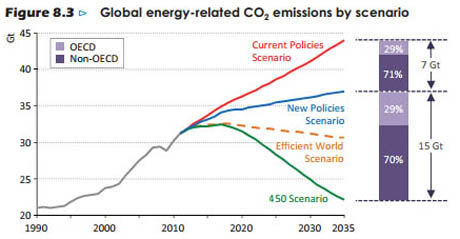
Figure 1: Global CO2 emissions path 1990-2035 per scenario. (Source: IEA World Energy Outlook 2012)
As the year kicks off, let’s be clear: to truly compete, renewable energy will have to become fully price competitive and substitutable with fossil fuels much faster. In other words, if renewables can turn out electricity at a few cents a kilowatt hour, solar panels can capture energy at night, and storage solutions can compete with gasoline in terms of energy density and ability to release energy, then we are talking.
Advances in science are key to achieve this. We will need inventors and human ingenuity to come up with the next generation of solutions and bring the remarkable advances in fields such as materials sciences and nanotechnology, information technology, engineering, and other natural sciences to bear on the problem much faster, shortening the innovation cycle.
Science fiction? Not necessarily. Just look at the efficiency improvements in solar photovoltaics over the past forty years (see Figure 2).
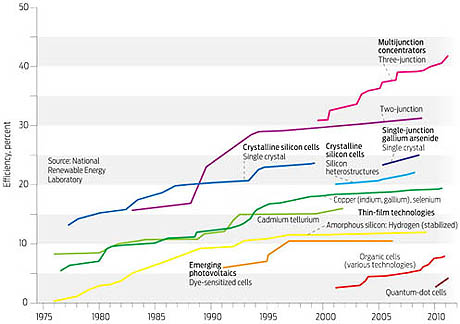
Figure 2: Efficiency improvements in solar photovoltaics, 1975 – 2012 (Source: National Renewable Energy Laboratory)
Already today, multi-junction cells allow for a 44.7% conversion efficiency. The fast rise of the efficiency curve of a newer class of materials with a particular crystal structure which is the same as that of CaTiO3 (calcium titanium oxide or ABX3) or ‘perovskite’-after which they are named-is even more exciting: perovskites have a band gap that can be tuned by changing halide content which makes certain materials very good light absorbers over the whole visible solar spectrum. In addition, reported high carrier mobility and long diffusion lengths mean that photo generated charges can travel longer distances, increasing charge absorption and ultimately producing more electricity.
And this is not all. For example, using rectifying antennas (or ‘rectennas’), it is already possible to convert conversion electromagnetic radiation to electricity, with reported efficiencies of over 90 percent in the microwave range. This is reminiscent of the solex agitator as depicted in the James Bond movie “The Man with the Golden Gun”, which was released right after the first oil crisis. In principle, physics predicts that it could be possible to also reach these efficiencies in the infrared and optical ranges, i.e., converting sunlight to electricity. Just think about the energy cost and availability implications of high-efficiency solar energy harvesting, leveraging a wide spectrum during the day, and possibly even conducting infrared harvesting at night.
Diligently applying science, there are many such possibilities. And they seem less out of the box when we think them through thoroughly. For example, what if wind turbines were routinely coated in ways that would enable them to much better deal with turbulence, so as to produce energy at lower wind speeds and suffer from much less downtime? Again, this is in principle possible, merging design thinking from bionics with advances in materials sciences. After all, birds can do this-and so can we with a little effort.
In comparison, new combinations such as Lithium and Sulfur that hold the potential to dramatically raise the energy density of batteries and lower their cost almost seem conventional (though they also need support to reach productization). Notwithstanding, storage continues to be one of the frontiers our inventors need to conquer to render the renewable economy possible. It needs to become much cheaper and better adapted to energy demand patterns (see Figure 3).
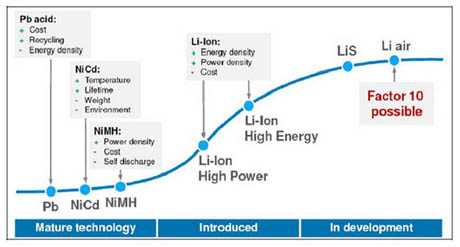
Figure 3: Battery technology roadmap (Source: Gopalakrishnan, D., Essen, H., Kampman, B., & Grünig, M. (2011). Impacts of Electric Vehicles-Deliverable 2. Assessment of Electric Vehicle and Battery Technology, Delft, CE Delft)
As the world of politics gets ready for COP21 in Paris, in 2015 we need to make progress on a key roadblock that stands in the way of a viable energy path forward: the duration of the innovation cycle in science. In solar photovoltaics, it took more than one hundred years from Becquerel’s discovery of the photovoltaic effect in 1839 to Bell Lab unveiling the first usable silicon solar cell in 1954, with a six-percent efficiency. We have gotten better since-but time is not on our side, and we need to keep stepping it up. Google’s $1million “Little Box” challenge calls for a small laptop-sized solar inverter to shrink power conversion technology-because an inverter one-tenth the size of existing devices would make it much easier to bring electricity everywhere where it is needed.
To accelerate the process and help to push the boundaries of usable energy solutions, we have created the Exergeia Project. We back potentially groundbreaking inventions and innovations in all fields of alternative energy, including unconventional approaches-including energy efficiency, generation, storage, transmission, and distribution. Nanomaterials for example could make a big contribution to energy conversion and storage.
Of course, progress sometimes happens in unexpected ways. When the namesake of the creator of the James Bond character mentioned earlier, Ian Fleming, Sir Alexander Fleming (who was otherwise unrelated), discovered penicillin in 1928, this was after ten years of searching for anti-bacterial agents. But the breakthrough came in a serendipitous fashion. Fleming had just returned from a family holiday-upon departure, he had left his laboratory a bit untidy, stacking all his cultures of staphylococci in one corner, where one culture became contaminated with a fungus while he was vacationing, which then destroyed the colonies of staphylococci immediately surrounding it. It is fortunate for humanity that Fleming was open minded and willing to be surprised, thus recognizing the extraordinary event. The rest is history.
It is now time to come up with analogous breakthroughs and make the energy transition real. If you work on something that has the potential to be the next steam engine or Internet, it is time to step forward, and help bring the 100 percent renewable energy economy into view. Mr. and Mrs. Fleming-and colleagues-please step forward!
Maximilian Martin, Ph.D. is the founder and global managing director of Impact Economy SA, an impact investment and strategy firm based in Lausanne, Switzerland, and leads the Exergeia Project.
The Asian Square Dance – Part 3 By Michael Akerib, Vice-Rector SWISS UMEF UNIVERSITY India India is the world’s largest democracy, and one of the few legitimate democracies in Asia showing that, contrary to statements of certain pundits, that democratic concepts can be successfully applied outside the West. Contrary to what is happening in China, its population of 1.2 billion, according to the latest census, continues to grow in spite of the fact that it has the world’s highest infant mortality rates. Its working age population is expected to add another 125 million in the next 10 years. This translates in large capital needs for additional infrastructure, making it dependent on foreign investments to a much larger extent than China. Unless it invests massively in infrastructure, its development will be very much hindered. There is a large imbalance between the genders with a ratio at birth of 914 girls for 100 boys. Life expectancy at birth is of 65 years. Half the population is younger than 18, a quarter is rural and a third lives in extreme poverty. A large proportion of the population is poor, with 50% having no access to electricity. Poverty is not evenly distriuted geographically, with some states considerably poorer than others – a gap widening ever more thus creating the threat of social movements. A Maoist insurgency has already taken hold. Nevertheless, the middle and upper class is forecast to grow from its present figure of 200 million to 1 billion by 2050. 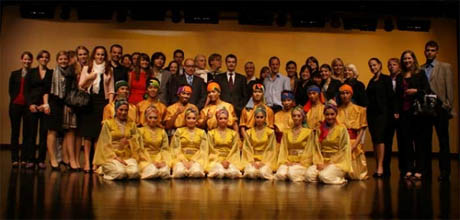 Credits: BFA 2010 (ab.eu)Its economy, the world’s third largest and second-fastest growing, should reach USD 25 to 30 trillion by 2050 and could be the world’s third largest after that of the US and China. Some analysts even believe it will be the world’s largest on a PPP basis, reaching USD 86 trillion, in that time horizon. In as much as, contrary to China, its economy is not geared to exports, it is less sensitive to global economic crises. However, it does rely on foreign direct investments to fund its large trade deficit. India’s development hinges on its ability to carry out a number of reforms, and in particular improve its infrastructure and the educational level of its citizens with a concomitant evolution of the population’s mentality away from a mindset embedded in traditions that forbid it from developing into a modern country, and clean up the environmental damage created by an unruly development. The country’s interaction with the other Asian countries remains, however, weak as Pakistan acts as an effective geographical barrier. It fears the strengthening of the China-Pakistan alliance; has no direct access to Central Asian energy producers and mistrusts the US. One of its main oil suppliers is Iran. In spite of these shortcomings, it has been successful in attracting businesses, particularly from Europe, to outsource their manufacturing and services or even to acquire Indian corporations. The country became a nuclear power in the 1990s and is continuing to develop its delivery capacity. Its agreement with the Atomic Energy Agency has created a precedent of allowing the country to have access to nuclear technology without signing the Nuclear Non-Proliferation Treaty. It is thus able to divert uranium from civilian to military programs. Military spending makes it the world’s largest buyer of weapons, with Russia as its main supplier. It is believed to have budgeted USD 100 billion for purchases over the next 10 years. It is expanding its naval power, acquiring aircraft carriers and planes to secure shipping lanes for hydrocarbons, just as China is doing. Read also The Asian Square Dance – Part 1 The Asian Square Dance – Part 2 The Future Now Show Shape the future now, where near-future impact counts and visions and strategies for preferred futures start. Do we rise above global challenges? Or do we succumb to them? The Future Now Show explores how we can shape our future now – where near-future impact counts. We showcase strategies and solutions that create futures that work. Every month we roam through current events, discoveries, and challenges – sparking discussion about the connection between today and the futures we’re making – and what we need, from strategy to vision – to make the best ones. The Future Now Show December 2014 Featuring Andreas M. Walker, weiterdenken.ch, Co-President, swissfuture, Switzerland Nick Price, Creative Business Consultant and Futurist, UK Hardy F. Schloer, Owner, Schloer Consulting Group, Malaysia Lise Voldeng, CEO & Chief Creative Officer, Ultra-Agent Industries Inc., Canada / USA Paul Holister, Editor, Summary Text about the Hope Barometer and … How are we doing? If you ask that question of a politician or journalist you will likely get an answer quoting the gross domestic product (GDP), an impersonal metric that someone once derided as a measure of how much we are stealing from the future to sell in the present. So what should we usefully measure? Bhutan introduced “Gross National Happiness” 40 years ago. The Swiss have been indexing fears and worries for 30 years, but they now also have a barometer of hope. How do these measures differ in terms of focus (personal, national, global) and depth, in the sense of being reactive to current events (disasters, terrorist attacks) or founded on fundamental human desires? How do they differ across cultures? A rich topic in which investigation and discussion have only just begun. about Collaborative Networks and … The topic of this show is collaborative networks, which are generally associated with leveraging the internet to work in groups where the members are geographically separated. But the mere existence of social networks like Facebook enables spontaneous collaboration regardless of geographical separation and some activist groups are already using this to great effect. But what are the broader implications of such collaboration? National cultures show strong differences in sentiment, in perception of threats and priorities, and we know that people instinctively behave differently in groups than individually. Will globally connected groups emerge that overshadow national groups or will group sentiments give way to individual sentiments? Will we become more varied or more homogenous, more easily manipulated or more independent in mind and heart, more harmonious or more discordant? about Privacy and … Despite outrage about intrusions of the NSA into our privacy, hordes of us are letting companies like Google ever deeper into our private lives because of the targeted services this enables. Social and work-related discussions increasingly take place in public forums. Do we need to abandon our privacy and accept that our chats, our musings, our lives in general, are open to public view? Would such an evolution lead to a culture of transparency with greater openness? Greater tolerance? Or more mindless mobs? Is it actually a step back, to the days of the village or tribe when everyone knew what everyone else was doing, an environment for which humans evolved and are arguably better adapted to than the more recent civilisation with its anonymity and demigods? 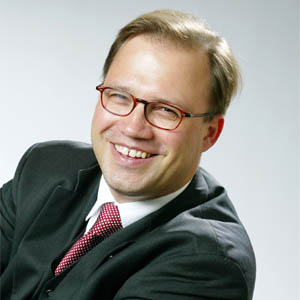 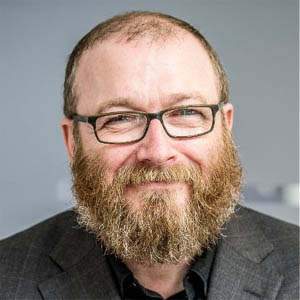 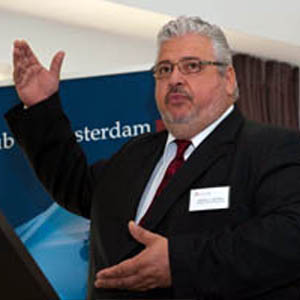  February Event: the future of Collective Intelligence  The Club of Amsterdam visits London. the future of Collective Intelligence February 11, 2015 Location: The Cube, Studio 5, 155 Commercial Street, London E1 6BJ This is a collaboration between The Cube and the Club of Amsterdam. Content How will humanity manage the transition from a human based intelligence to a superior machine intelligence in a constructive, peaceful and practical way? The emergence of Global Intelligence marks the fundamental transition from event-based development and event-based learning to continuous network enabled parallel development and continuous learning, by man, and by machine; simultaneously and complimentary. Similar to aspen trees, where the roots grow for 100s of meter underground, to meet roots of other aspen trees, to exchange information about water and soil conditions, the global networks of machines and its operators begin more and more to understand in real-time the causalities of changes in information streams and react in real-time as well. This process will shape the future more than anything else of the past 1,000 years. One of the most profound changes will be that Intelligence will not be any longer a competitive process, but a complimentary and cooperative process. This will shape, how we govern countries, conduct commerce and manage crisis. with Hardy Schloer, Managing Director, Schloer Consulting Group, Advisory Board, Club of Amsterdam When you join THECUBE, you join a curated, diverse and smart community of scientists, engineers, designers, technologists, artists, futurists and anthropologists. We help our members innovate through our events, innovation labs and one to one mentoring. As a community we actively collaborate to create innovative solutions via our consultancy and independent projects. The physical space is open plan and designed to make you feel calm, focused and happy. We have created a space that is a tool for the 21st century work needs, this means no cubicles, minimum artificial light, art, natural elements and openness. Our story began as a response to the financial crash of 2008; we hypothesised that it was the start of an economic and anthropological pivot. This kind of pivot brings monumental change, which needs a new way of thinking and tools. In 2014 we are starting a series of workshops which will extrapolate tools and intelligence from neuroscience, culture and industrial engineering. thecubelondon.com Mr. and Mrs. Fleming, Step Forward to Make This Energy Transition Real! |

by Dr. Maximilian Martin, Founder and Global Managing Director, Impact Economy SA
A closed-loop global economy, powered mainly by renewable energy, is the best long-run bet to sustain a projected population of over nine billion people. 2015 will be an interesting year with the United Nations Climate Change Conference (COP21) seeking a legally binding, universal agreement on climate, from all nations. If we do not step it up, real progress beyond calls for action will be a challenge though. This is not just because of the re-emergence of political tensions between East and West. We are also still missing the magic recipe and some of its core ingredients. The key question is, how can we get to breakthrough solutions, and deploy them at scale?
In spite of the UN conferences, emissions growth has pretty much gone unabated thus far, with the only major dips at the end of the Cold War, when Eastern Europe’s industrial production suddenly collapsed, and during the global financial crisis. Moreover, almost 1.3 billion people do not yet have any access to electricity whatsoever, and 2.7 billion people rely on traditional use of biomass for cooking. Under a business as usual scenario, we are well on our way to 45 Gigatons of energy-related emissions by 2035 (see Figure 1).
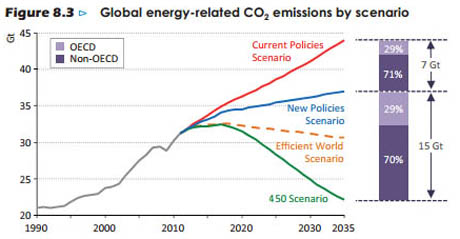
Figure 1: Global CO2 emissions path 1990-2035 per scenario. (Source: IEA World Energy Outlook 2012)
As the year kicks off, let’s be clear: to truly compete, renewable energy will have to become fully price competitive and substitutable with fossil fuels much faster. In other words, if renewables can turn out electricity at a few cents a kilowatt hour, solar panels can capture energy at night, and storage solutions can compete with gasoline in terms of energy density and ability to release energy, then we are talking.
Advances in science are key to achieve this. We will need inventors and human ingenuity to come up with the next generation of solutions and bring the remarkable advances in fields such as materials sciences and nanotechnology, information technology, engineering, and other natural sciences to bear on the problem much faster, shortening the innovation cycle.
Science fiction? Not necessarily. Just look at the efficiency improvements in solar photovoltaics over the past forty years (see Figure 2).
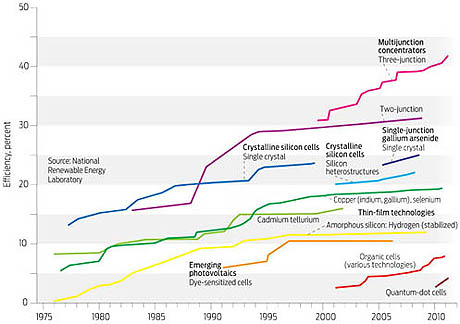
Figure 2: Efficiency improvements in solar photovoltaics, 1975 – 2012 (Source: National Renewable Energy Laboratory)
Already today, multi-junction cells allow for a 44.7% conversion efficiency. The fast rise of the efficiency curve of a newer class of materials with a particular crystal structure which is the same as that of CaTiO3 (calcium titanium oxide or ABX3) or ‘perovskite’-after which they are named-is even more exciting: perovskites have a band gap that can be tuned by changing halide content which makes certain materials very good light absorbers over the whole visible solar spectrum. In addition, reported high carrier mobility and long diffusion lengths mean that photo generated charges can travel longer distances, increasing charge absorption and ultimately producing more electricity.
And this is not all. For example, using rectifying antennas (or ‘rectennas’), it is already possible to convert conversion electromagnetic radiation to electricity, with reported efficiencies of over 90 percent in the microwave range. This is reminiscent of the solex agitator as depicted in the James Bond movie “The Man with the Golden Gun”, which was released right after the first oil crisis. In principle, physics predicts that it could be possible to also reach these efficiencies in the infrared and optical ranges, i.e., converting sunlight to electricity. Just think about the energy cost and availability implications of high-efficiency solar energy harvesting, leveraging a wide spectrum during the day, and possibly even conducting infrared harvesting at night.
Diligently applying science, there are many such possibilities. And they seem less out of the box when we think them through thoroughly. For example, what if wind turbines were routinely coated in ways that would enable them to much better deal with turbulence, so as to produce energy at lower wind speeds and suffer from much less downtime? Again, this is in principle possible, merging design thinking from bionics with advances in materials sciences. After all, birds can do this-and so can we with a little effort.
In comparison, new combinations such as Lithium and Sulfur that hold the potential to dramatically raise the energy density of batteries and lower their cost almost seem conventional (though they also need support to reach productization). Notwithstanding, storage continues to be one of the frontiers our inventors need to conquer to render the renewable economy possible. It needs to become much cheaper and better adapted to energy demand patterns (see Figure 3).
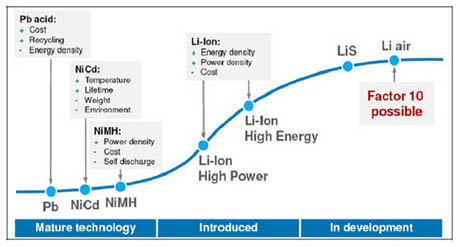
Figure 3: Battery technology roadmap (Source: Gopalakrishnan, D., Essen, H., Kampman, B., & Grünig, M. (2011). Impacts of Electric Vehicles-Deliverable 2. Assessment of Electric Vehicle and Battery Technology, Delft, CE Delft)
As the world of politics gets ready for COP21 in Paris, in 2015 we need to make progress on a key roadblock that stands in the way of a viable energy path forward: the duration of the innovation cycle in science. In solar photovoltaics, it took more than one hundred years from Becquerel’s discovery of the photovoltaic effect in 1839 to Bell Lab unveiling the first usable silicon solar cell in 1954, with a six-percent efficiency. We have gotten better since-but time is not on our side, and we need to keep stepping it up. Google’s $1million “Little Box” challenge calls for a small laptop-sized solar inverter to shrink power conversion technology-because an inverter one-tenth the size of existing devices would make it much easier to bring electricity everywhere where it is needed.
To accelerate the process and help to push the boundaries of usable energy solutions, we have created the Exergeia Project. We back potentially groundbreaking inventions and innovations in all fields of alternative energy, including unconventional approaches-including energy efficiency, generation, storage, transmission, and distribution. Nanomaterials for example could make a big contribution to energy conversion and storage.
Of course, progress sometimes happens in unexpected ways. When the namesake of the creator of the James Bond character mentioned earlier, Ian Fleming, Sir Alexander Fleming (who was otherwise unrelated), discovered penicillin in 1928, this was after ten years of searching for anti-bacterial agents. But the breakthrough came in a serendipitous fashion. Fleming had just returned from a family holiday-upon departure, he had left his laboratory a bit untidy, stacking all his cultures of staphylococci in one corner, where one culture became contaminated with a fungus while he was vacationing, which then destroyed the colonies of staphylococci immediately surrounding it. It is fortunate for humanity that Fleming was open minded and willing to be surprised, thus recognizing the extraordinary event. The rest is history.
It is now time to come up with analogous breakthroughs and make the energy transition real. If you work on something that has the potential to be the next steam engine or Internet, it is time to step forward, and help bring the 100 percent renewable energy economy into view. Mr. and Mrs. Fleming-and colleagues-please step forward!
Maximilian Martin, Ph.D. is the founder and global managing director of Impact Economy SA, an impact investment and strategy firm based in Lausanne, Switzerland, and leads the Exergeia Project.
Club of Amsterdam blog

Club of Amsterdam blog
http://clubofamsterdam.blogspot.com
Socratic Design
by Humberto Schwab, Philosopher, Owner, Humberto Schwab Filosofia SL, Director, Club of Amsterdam
The Ukrainian Dilemma and the Bigger Picture
by Hardy F. Schloer, Owner, Schloer Consulting Group – SCG, Advisory Board of the Club of Amsterdam
The impact of culture on education
by Huib Wursten, Senior Partner, itim International and
Carel Jacobs is senior consultant/trainer for itim in The Netherlands, he is also Certification Agent for the Educational Sector of the Hofstede Centre.
What more demand for meat means for the future
by Christophe Pelletier, The Happy Future Group Consulting Ltd.
Inner peace and generosity
by Elisabet Sahtouris, Holder of the Elisabet Sahtouris Chair in Living Economies, World Business Academy
News about the Future

Floating vertical axis offshore wind turbine
Spinfloat is a new vertical axis floating wind turbine technology developed by EOLFI
Floating wind turbines make it possible to harness the full offshore wind potential as they can be installed in water depths of several hundred meters. Characterized by a vertical axis and pitched blades, Spinfloat displays an enhanced aerodynamic performance and more than 5MW power.

Lakes: a significant thermal energy source
Using heat from Lake Constance equivalent to the energy produced by one or two nuclear power plants would lead to a change in water temperature of less than 0.2°C, with no appreciable impacts on the ecosystem. This is one of the findings of a recent Eawag study which, for the first time, systematically simulated how lake stratification and water temperatures would be affected by substantial withdrawals of thermal energy in the winter or inputs of cooling water in the summer.
Eawag is a world-leading aquatic research institute. Its research, which is driven by the needs of society, provides the basis for innovative approaches and technologies in the water sector. Through close collaboration with experts from industry, government and professional associations, Eawag plays an important bridging role between theory and practice, allowing new scientific insights to be rapidly implemented.
Recommended Book

Superintelligence: Paths, Dangers, Strategies
by Nick Bostrom
Superintelligence: Paths, Dangers, Strategies (2014) is a non-fiction book by Oxford philosophy professor Nick Bostrom. The book argues that if machine brains surpass human brains in general intelligence, then this new superintelligence could replace humans as the dominant lifeform on Earth. Sufficiently intelligent machines could improve their own capabilities faster than human computer scientists. As the fate of the gorillas now depends more on humans than on the actions of the gorillas themselves, so would the fate of humanity depend on the actions of the machine superintelligence. Absent careful pre-planning, the most likely outcome would be catastrophe
Syntact – touch the sound

Syntact™ – a new musical interface based on the revolutionary technology of non-contact tactile feedback. 121 ultrasonic transducers are focusing acoustic energy into one spatial point, thus creating a tangible vibration in midair. Syntact enables musicians to virtually mold and shape the sound with their hands. It allows easy and playful generation of meaningful and diverse musical structures.
The technology behind Syntact provides contact-free tactile feedback to the musician. By utilizing airborne ultrasound a force field is created in mid-air that can be sensed in a tactile way. The interface allows a musician to feel the actual sound with its temporal and harmonic texture. While an optical sensor system is interpreting her or his hand gestures, the musician can physically engage with the medium of sound by virtually molding and shaping it – i.e. changing its acoustic appearance – directly with their hands.
Applications
- Live music creation and performance
- Virtual reality / telepresence
- Public interactive multimedia installations in museums, galleries, science centres etc.
- Interactive advertising
Developing the capacity to “See More” is the great adventure of our time

By Rosana Agudo, Tecnología para la Transformación Interio
We find ourselves facing an unprecedented paradigm shift; never before have human beings had to face such a global challenge.
There is much talk of this “Paradigm Shift”, as well as of an “Era Of Change”, and even of a “Change of Era” …, but we begin to quake when we are told that this change means “detaching”, and not only from the need to own material things, it is not only a matter of measures such as “tightening one’s belt” or of “cuts”, that in the end always have to be taken by the most vulnerable social classes. This frightens us because our intuition tells us this change concerns each and every one of us, and that it is so deep at a personal interior level that it is going to break structures of social models (this is already happening) and implies renouncing beliefs that up to now have been felt to be immovable and have been the foundation of our confidence, of our control and even of our identity. And this involves all social strata, all areas and all societies. It is a change of mental model, and brings a widening of vision, of thought, where opposites begin to be seen as complementary and that is good news.
A dominant social paradigm is a mental image of social reality that guides a society’s expectations. The dominant mental model in our current social paradigm has, in general terms, the following features:
a. It makes the subjective invisible and tries to reduce it to the objective, to be able to measure and handle it, thus impoverishing the variety and wealth of existence and its manifestations.
b. It needs to break the universe down into pieces to understand it, while believing the division to be real, and provoking the disconnection of each human being with him- or herself, with all other human beings and with nature, with the dramatic consequences this holds for all.
c. It assumes there is nothing beyond what one sees, making it impossible for human beings, men or women, to seek in their interior the key factors that will allow them access to a vision of the world that is deeper, richer and more diverse, as well being simultaneously more unifying and true.
The mental level, the mental space, the thought that drives us, that we act on, that we create reality with at this time, is not appropriate to the most advanced being evolving right now on this planet. Human beings evolve through the mind, and the more evolved this is the more subtle, richer and more diverse is the reality it contemplates; and in consequence, the more material and ideas it can use to construct the world it needs to continue on its evolutionary path towards an ever greater perfection of the physical body, the emotions, the mind and the spirit that feeds it. Human beings are finding that they are being pushed to take on the difficult, definitive and pending task of transforming themselves in order to make the transformation possible.
We human beings, in spite of our constant talk of “transformation”, of our need to “transform”, do not understand that “transformation” is something that happens in spite of us, in fact the transformation is taking place right now, before our very eyes, even though we cannot see it because of the expectations and assumptions that are an integral part of our mental model, our social and personal paradigm.
We human beings can only bring about changes. These successive changes in our way of acting bring about small transformations in our surroundings. However, the profound, voluntary changes in our way of thinking; interior changes that open us up to new logic, bring about transformations that are so important as to give rise to that sought-after, significant social paradigm shift, and even to a change of era.
Thought is malleable, but what we have created around it, in the very structure -so perfect and extraordinary- of the mind, what reinforces and strengthens the mental model, is difficult to understand, to detect and finally to demolish. Changing a thought can change reality. That is true; but are we willing to change reality? Or at least are we willing to change a thought? No, if it is trapped in the web of the mental model and we do not know the latter, it is invisible.
The mental model reinforces and strengthens itself through the assumptions and the expectations about how things, people and so on should be, and how the outcomes, consequences, relations and so on should be; thus our actions, our being in the world spring from assumptions that give rise to expectations as to how things, relations, business will and should be.
We never see the world, reality as it is, but as how we assume it has to or should be, without realizing that in this way we are also “mortgaging” our future, adapting it to the same assumptions. This way things go well or not for me, my life is happy or not, my relationship is satisfactory or not, … depending on whether or not my expectations are met, or even beyond that, the social expectations about it, what is or is not socially accepted in the model.
If we reflect on this fact, we realize we only live in the past, the present is hidden from us by the veil of the assumptions about what is or should be, and we prepare our future so that the same expectations are met, either improved or following the same rules that we already know and are “approved” by the model.
Thus, we can define the mental model as: the set of assumptions, beliefs and thoughts with which we interpret reality. They make up a filter that translates what we perceive and gives rise to personal experience and, of course, also social experience, as we have already seen.
When applied to any area, they are the beliefs, thoughts, assumptions that shape cultures and guide strategies, policies, laws, actions and decisions, while at the same time conditioning and restricting these to strengthening the existing model itself, as mentioned earlier.
Now we can begin to understand why it is so difficult for us to be receptive to new fields of thought. We believe it means renouncing so many assumptions, beliefs, truths…. And that it is something that is ours, where our identity lies. However, it is extremely liberating. Once you have lost your fear of abandoning an assumption created by a thought trapped in a certain mental model, once you have stopped being afraid to rid yourself of a belief, the limits disappear and, following that, freedom appears, along with a smile.
To teach the mind to free itself, to educate the mind to the logic of interior reflection, to meditation, is pleasant. To get to know the mental model, become aware of it and its workings, is the fastest, most effective and necessary way to bring about real and effective transformations in any field of operation that can take us beyond where we are and make us capable of seeing it.
New neuronal connections are made in the brain of those people who have decided to see more. And it is the most extraordinary of adventures; it is the Great Adventure of Our Time to develop the capacity to See More.
Futurist Portrait: Ramez Naam
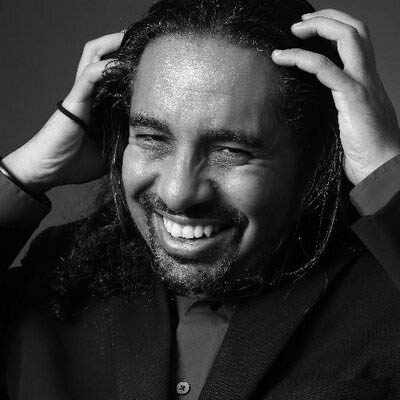
Ramez Naam is a Computer Scientist, Futurist & Award-Winning Author.
Ramez spent 13 years at Microsoft, where he led teams developing early versions of Microsoft Outlook, Internet Explorer, and the Bing search engine. His career has focused on bringing advanced collaboration, communication, and information retrieval capabilities to roughly one billion people around the world, and took him to the role of Partner and Director of Program Management within Microsoft, with deep experience leading teams working on cutting edge technologies such as machine learning, search, massive scale services, and artificial intelligence.
Between stints at Microsoft, Ramez founded and ran Apex NanoTechnologies, the world’s first company devoted entirely to software tools to accelerate molecular design. He holds 19 patents related to search engines, information retrieval, web browsing, artificial intelligence, and machine learning.
Naam currently holds a seat on the advisory board of the Acceleration Studies Foundation, is a member of the World Future Society, a Senior Associate of the Foresight Institute, and a fellow of the Institute for Ethics and Emerging Technologies.
He is the author of More Than Human: Embracing the promise of biological enhancement, which reviews new technologies and makes a case for embracing human enhancement, showing readers how new technologies are powerful new tools in humanity’s quest to improve ourselves, our offspring and our world.
Naam began publishing science fiction in 2012, with Nexus, from Angry Robot Books. It centers around an experimental nano-drug by that name. Nexus won the 2014 Prometheus Award. The sequel was Crux.
In 2013, Naam published The Infinite Resource: The Power of Ideas on a Finite Planet.Quotes
“We must learn to set our emotions aside and embrace what science tells us.”
The Next 10 Years: Everything Is Connected
Agenda
Watch The Future Now Show!
| Season Events 2014 / 2015 NEXT Event  UK February 11, 2015 the future of Collective Intelligence Location: The Cube, Studio 5, 155 Commercial Street, London E1 6BJ This is a collaboration between The Cube and the Club of Amsterdam. London April 24, 2015 the future of Metro Vitality Location: ARUP London A collaboration between the Association of Professional Futurists and the Club of Amsterdam and hosted by ARUP Foresight + Research + Innovation. |
Special Supporters









Customer Reviews
Thanks for submitting your comment!